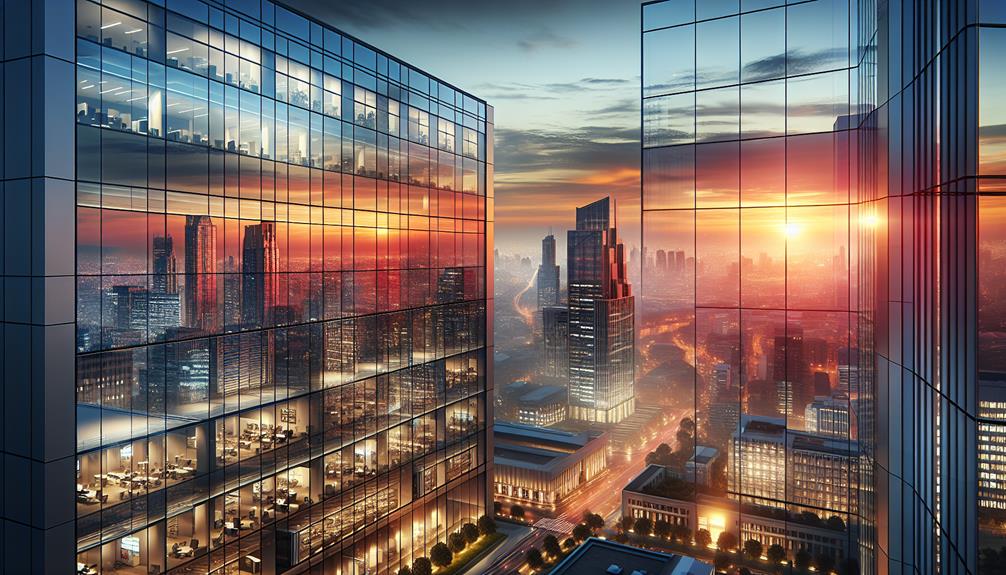
Reflective films, integral to advanced solar control tinting, utilize finely calibrated metallic layers that significantly mitigate solar heat gain through their high reflectivity and UV blockage capabilities. This technology not only curtails the reliance on air conditioning, thereby reducing energy costs, but also enhances the thermal comfort of spaces in buildings and vehicles. As industry professionals explore sustainable solutions, the dual benefits of improved energy efficiency and aesthetic appeal position these films at the forefront of green building innovations. However, the application of these films extends beyond just functionality. The question remains: how can commercial tinting properties be optimized further in new market segments?
Understanding Reflective Films
Reflective films, commonly comprised of micro-thin metallic layers, are engineered to enhance solar control in architectural and automotive glass applications. These films are typically fabricated using a sputtering process where metals such as aluminum, nickel, or stainless steel are deposited onto a polyester substrate. This technology not only ensures uniformity in the metallic coating but also allows for precise control over the optical properties and thickness of the film.
The structure of these films is designed to reflect infrared radiation while maintaining high levels of visible light transmission. This dual functionality is crucial in achieving energy efficiency without compromising natural light. The inclusion of UV inhibitors within the film’s layers further protects against ultraviolet radiation, contributing to the durability and efficacy of the film.
In the industry, the performance of reflective films is often measured in terms of their Solar Heat Gain Coefficient (SHGC), Visible Light Transmission (VLT), and Ultraviolet Rejection (UVR). Understanding these metrics is essential for professionals in the field, as they dictate the suitability of a specific film for a given application.
Benefits and Applications
While reflective films are primarily recognized for their ability to manage solar heat, their applications extend broadly across various industries, including automotive and architectural sectors, where they contribute significantly to energy savings and occupant comfort. These films are engineered to reflect infrared radiation, effectively reducing cooling loads and thereby curtailing energy consumption in buildings and vehicles. By mitigating the penetration of ultraviolet rays, they also protect interiors from fading, preserving the lifespan of furnishings and vehicle upholstery.
In the architectural realm, the integration of reflective films is pivotal in achieving compliance with stringent energy codes and green building certifications like LEED and BREEAM. They serve not only functional but also aesthetic purposes, offering a sleek, modern appearance while maintaining visibility and brightness. This dual capability makes them an indispensable tool in contemporary urban design, promoting sustainable building practices without compromising on style.
Similarly, in the automotive industry, these films enhance comfort by reducing glare and heat buildup, which can diminish driver fatigue and improve overall safety. The application of reflective films is becoming a standard in the production of energy-efficient vehicles, aligning with global initiatives towards reducing carbon footprints and enhancing occupant comfort.
In conclusion, reflective films in solar control tinting stand as stalwart guardians against the relentless onslaught of solar radiation, expertly balancing the dual mandates of energy conservation and aesthetic enhancement in commercial tinting.
These metallic sentinels not only shield interiors from the sun’s piercing glare and insidious ultraviolet rays but also transform buildings and vehicles into bastions of comfort and style.
Thus, they are indispensable in the quest for sustainable and visually appealing environments.